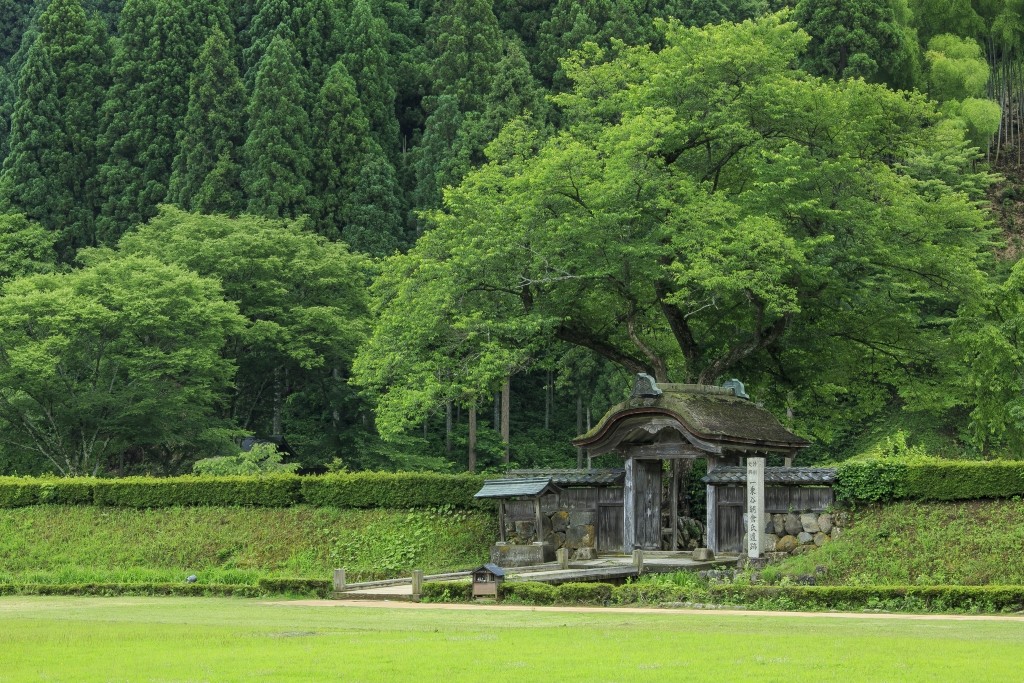
When speaking of "Japan's Top 100 Castles" in Fukui Prefecture, the first name that comes to mind might be "Maruoka Castle", which is one of the 12 existing castle towers. However, there is a castle with a longer history than Maruoka Castle - "Ichijodani Castle", nicknamed the "Hokuriku's Little Kyoto", that is located in a valley along the river and is surrounded by a spacious and bustling castle town.
"Ichijodani Asakura Clan Historic Ruins": A mountain castle beyond imagination

"Ichijodani Castle" (一乗谷城) designated as one of Japan's Top 100 Castles is actually part of the "Ichijodani Asakura Clan Historic Ruins" (一乗谷朝倉氏遺跡). The "Ichijodani" (一乗谷), where the Ichijodani Asakura Clan Historic Ruins is located, is a narrow valley about 500 meters east-west and about 3 kilometers north-south along the Ichijodani River, about 10 kilometers southeast of Fukui City.
Ichijodani itself is a natural fortress as it is surrounded by mountains to the east, west, and south, and the Asuwa River flowing to the north. Not only the Ichijodani River, a tributary of the Asuwa River, was used as a convenient means of transportation, but Ichijodani which is adjacent to Ono City also occupied a strategically important position. Therefore, in 1467, the Sengoku daimyo "Asakura clan" based in Echizen Province (now Fukui Prefecture) established their base in Ichijodani. The 7th head of the family, Takakage Asakura, built a castle, samurai residences, and temples around Ichijodani as a thriving commercial town.
Unfortunately, a hundred years later, the city was defeated by Nobunaga Oda and the castle town was burned to the ground in 1573. Since 1967, the archaeological site has been excavated, and is now designated as a national Special Historic Site called the Ichijodani Asakura Clan Historic Ruins.
Japan's largest medieval city ruins

Although it was burned to the ground by Nobunaga Oda, later excavations revealed that the Ichijodani Asakura Clan Historic Ruins of 278 hectares were buried in good condition. Various relics were also unearthed from the ruins, revealing the fact that it is a very valuable medieval city ruin (Japan's medieval period was from the end of the 12th century to the end of the 16th century).
For this reason, the Ichijodani Asakura Clan Historic Ruins have been designated as a national Special Historic Site. Among them, the ruins of the garden were designated as a Special Place of Scenic Beauty, while many artifacts excavated from the ruins were designated as Important Cultural Properties. There are only six historic sites in Japan that have received the “Triple National Designations”. Plus, the Ichijodani Asakura Clan Historic Ruins are the only historical site located in the Hokuriku region. From such point, the value of the Ichijodani Asakura Clan Historic Ruins can clearly be perceived.
(Beside the Ichijodani Asakura Clan Ruins, the Kinkaku-ji Temple, the Ginkaku-ji Temple, the Daigo-ji Sanbo-in Temple in Kyoto, the Heijo Palace in Nara, and the Itsukushima Shrine in Hiroshima have also received "Triple National Designations".)
"Hokuriku's Little Kyoto" greatly influenced by Kyoto
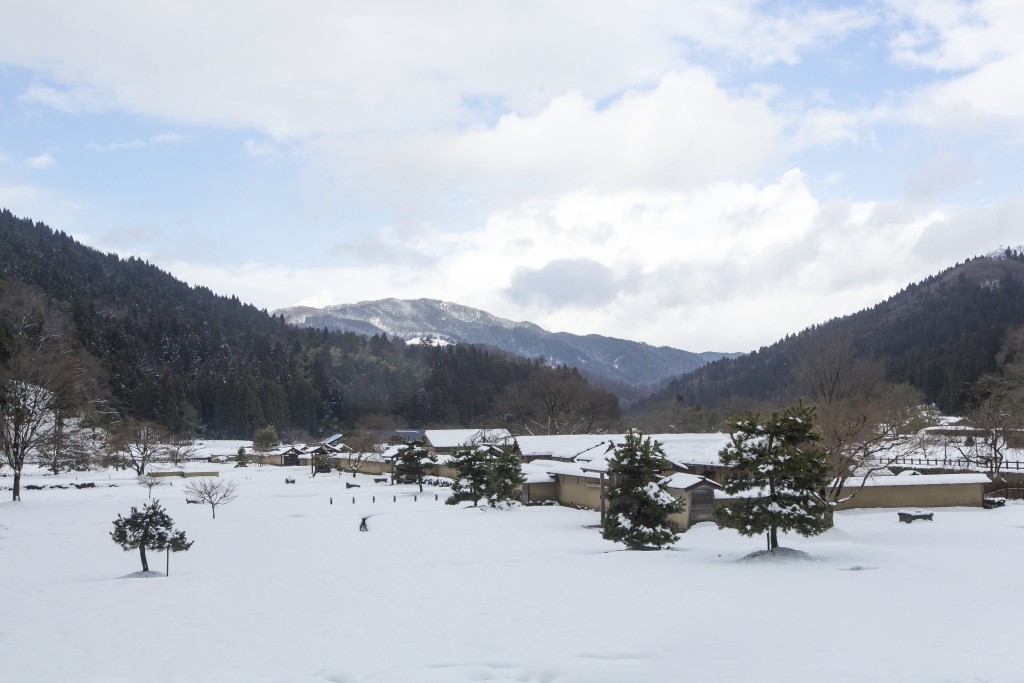
There is a road called "Saba Kaido" (鯖街道) that connects Fukui Prefecture and Kyoto Prefecture, two places that are adjacent to each other and frequented by citizens. "Saba Kaido" was once a route to deliver seafood caught in Wakasa Bay to Kyoto. As mackerel (called 鯖 / Saba in Japanese) was the most common seafood caught, this road was then named "Saba Kaido".
Echizen Province, which prospered greatly under the rule of the Asakura clan, was visited by intellectuals such as nobles and monks from Kyoto and Nara. Because these visitors brought a wide variety of Kyoto culture to it, the place was thus called "Hokuriku's Little Kyoto". In particular, Yoshikage Asakura, the 11th head of the family, had a considerable interest in literature and the arts and was fond of arts such as painting and waka poetry. It is no exaggeration to say that Ichijodani at that time was a castle town where literary arts flourished.
Four “Garden Ruins” that are symbols of culture
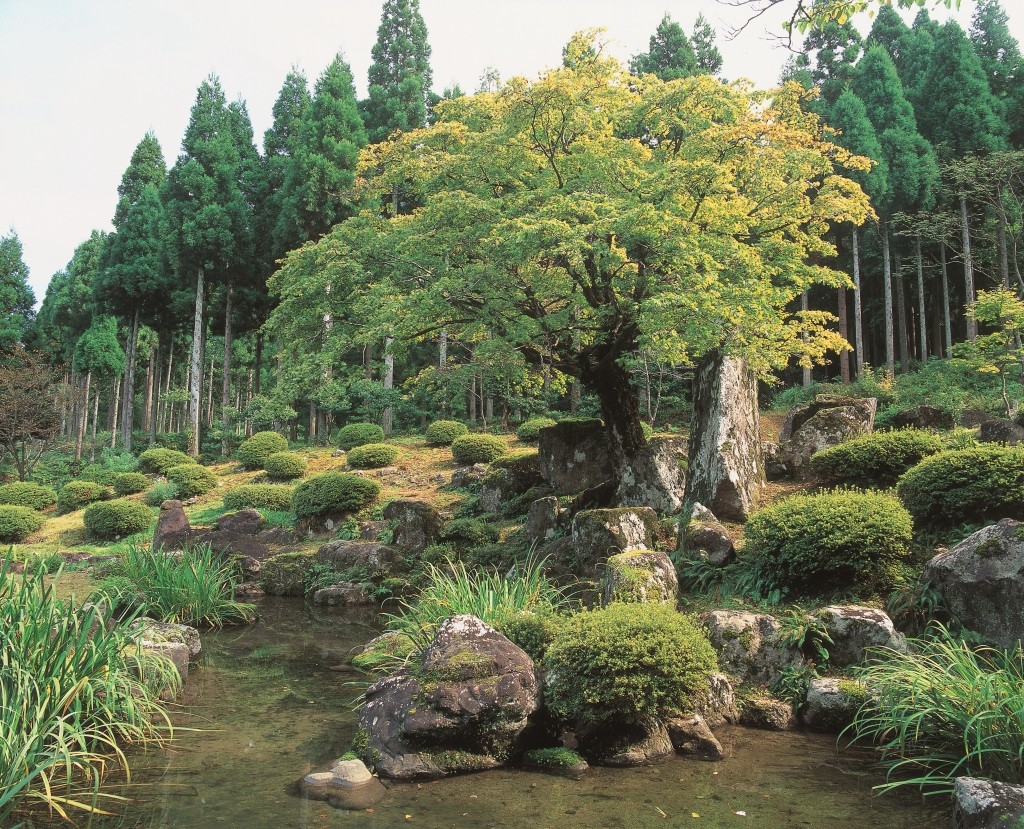
The "garden" (庭園 / teien) is a place where waka poetry gatherings and tea ceremonies, which represent Kyoto culture, are held. Therefore, from the four garden ruins at the Ichijodani Asakura Clan Historic Ruins, we can infer the Asakura clan's emphasis on literature and art.
Asakura Yakata Garden Ruins (朝倉館跡庭園), Suwa Residence Garden Ruins (諏訪館跡庭園), Yudono Garden Ruins (湯殿跡庭園), and Nanyoji Garden Ruins (南陽寺跡庭園) are collectively known as the "Ichijodani Asakura Family Garden" (一乗谷朝倉氏庭園). The Asakura Yakata (Lord Asakura's Residence), where Yoshikage Asakura lived, had the palactial mansion where he spent his daily life, as well as Japan's oldest flower bed and splendid stonework. Suwa Residence is the residence of Yoshikage Asakura's wife, "Koshosho" (小少将), and has the largest garden area. The Yudono ruins are the oldest gardens, and they are different in style and atmosphere from other gardens. Nanyoji Temple is a nunnery that was rebuilt by Sadakage Asakura for his daughter. It is said that there was not only a stone arrangement with three steps of waterfalls in the garden, but also a beautiful Itozakura tree in front of the garden. In 1568, Yoshiaki Ashikaga, who later became the 15th (last) Seii Taishogun of the Muromachi Shogunate in the same year, was invited to the cherry blossom viewing party here as well.
The 2020 NHK Taiga drama "Kirin ga Kuru" (麒麟がくる, also known as 'Awaiting Kirin') also recreated the vast garden made by the Ichijodani Asakura Clan as parts of the set for shooting drama.
Asakura Clan with an illustrious 100-year history

The Ichijodani castle town built by the Asakura clan has enjoyed a hundred years of peace and prosperity. Nevertheless, the dream-like 100-year history was quickly extinguished in flames. The existing buildings in Ichijodani Asakura Clan Ruins, such as the samurai residences and townhouses of the old castle town, were recreated using modern technology.
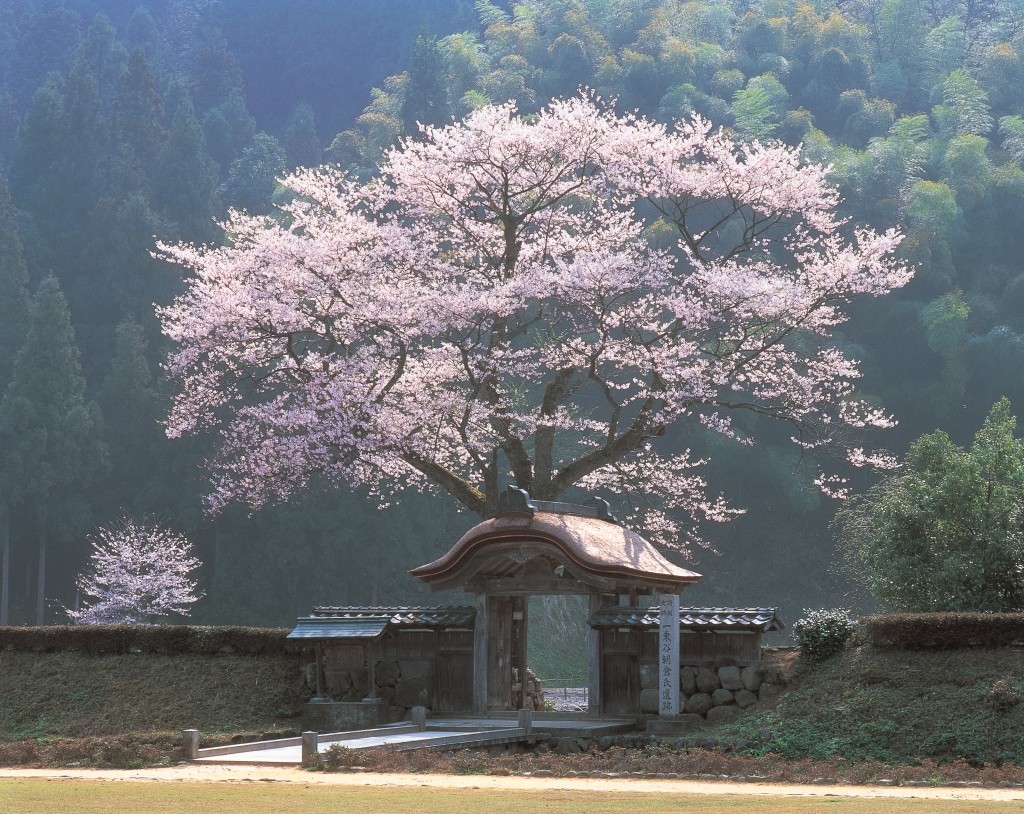
The most famous "Karamon" (唐門 - a roofed gate) was moved to the current location from Yoshikage Asakura's family temple Bodai-ji Shoun-in (菩提寺松雲院). The cherry tree planted next to it blooms in spring is a sight that expresses the love of Yoshikage's paintings, waka poems and other literary arts.
Spot Information
- Spot name: Ichijodani Asakura Clan Historic Ruins (一乗谷朝倉氏遺跡) (Ichijodani Castle)
- Address: Kidonouchi-cho, Fukui City
- Access: About 15 minutes from JR Fukui Station on the Etsumihoku Line, get off at Ichijodani Station.
- Business hours: 24/7
- Admission fee: Free
Spot Information
- Spot name: Ichijodani Asakura Clan Historic Ruins Restored Townscape (一乗谷朝倉氏遺跡復原町並)
- Address: Kidonouchi-cho, Fukui City
- Access: About 15 minutes from JR Fukui Station on the Etsumihoku Line, get off at Ichijodani Station.
- Business hours: 9:00-17:00 (admission until 16:30)
- Closed: Year-end and New Year holidays (December 28th to January 4th)
- Admission fee: 330 yen
The Ichijodani Asakura Family Site Museum opened in October 2022!
The Ichijodani Asakura Family Site Museum (一乗谷朝倉氏遺跡博物館) was established in Fukui City to make more people aware of the Ichijodani Asakura Clan Historic Ruins, which have been excavated for more than 50 years and discovered a wide variety of excavated artifacts. Through a full-scale reproduction of the Asakura Yakata, a huge diorama of the townscape of the castle town, and an exhibition room of the ruins, visitors will be introduced to the illustrious 100-year history of the Asakura clan in more detail.
Spot Information
- Spot name: Ichijodani Asakura Family Site Museum (一乗谷朝倉氏遺跡博物館)
- Address: 8-10 Abakanakajimacho, Fukui City, Fukui Prefecture
- Access: About 15 minutes from JR Fukui Station on the Etsumihoku Line. Gget off at Ichijodani Station, then walk for about 3 minutes.
- Business hours: 9:00-17:00
- Closed: Mondays, year-end and New Year holidays (December 29th to January 2nd)
- Admission fee: 700 yen for adults, 400 yen for high school students, 200 yen for elementary and junior high school students, 350 yen for those over 70.
- *Online reservations are required to enter at the moment.
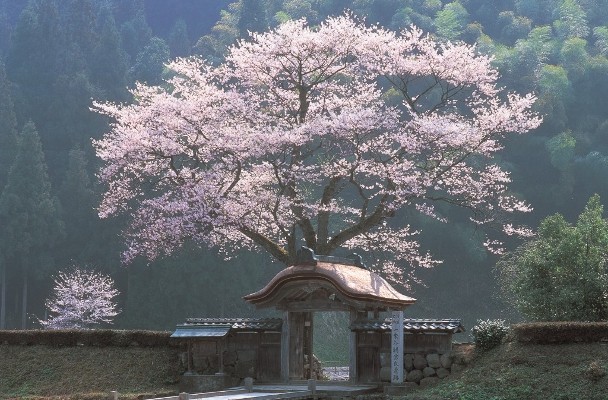
Comments